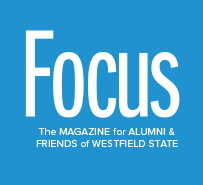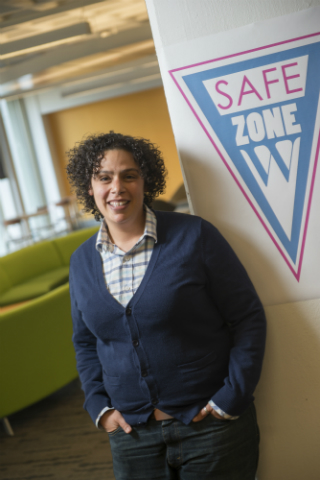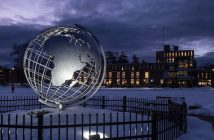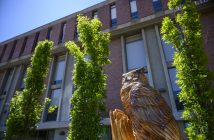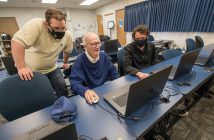Program aimed at campus’ LGBTQQ populations
Working to keep the campus community safe for the lesbian, gay, bisexual, transgendered, queer and questioning community (LGBTQQ) is the Safe Zone program. Its goal is to improve visibility and support for LGBTQQ students and employees by identifying and training a network of sensitive and affirmative allies.
Jessika Murphy, assistant director of Student Activities and the chair of the Safe Zone Committee, says, “The Safe Zone program offers a training session that is essentially a crash course about LGBTQQ issues. Training is primarily mixed groups of students, faculty and staff. We try to keep it a 50/50 mix of students and staff, so that information is shared with all members of the campus community.”
The three-hour training session is packed full of information, from a section on “coming out” to work on being an ally. Because the group is mixed, there is the opportunity for staff to become aware of students’ concerns. For instance, at a Safe Zone training, the subject of campus safety was brought up by a student who was aware of bullying incidents around gender expression in the male and female bathrooms.
“Because we had Dr. Carlton Pickron [vice president of Student Affairs]in that training session, he is working on establishing gender-neutral bathrooms on campus,” says Murphy. That is exactly the type of information sharing and action that the Safe Zone training promotes.
The training consists of discussions and exercises about diversity. “For instance, we cover vocabulary and its influence on how we perceive each other,” says Murphy. She explains an exercise in which participants write down a personal experience that was heterosexist or homophobic. “This process helps them identify the messages they got about the meaning of being male and female as they were growing up,” says Murphy. “We also do a section on gender and what that means.”
The Safe Zone is working on expanding. “First, we want the training to stand on its own,” says Murphy. As it currently operates, members of the Safe Zone committee are the only trainers. “The plan is to offer a ‘Train the Trainers’ program, where folks learn to be a facilitator for the program.” Other initiatives include bringing speakers to campus, using the campus ‘First Year Read’ by introducing gay literature, organizing a dinner for the trainers and asking participants to speak about what the training meant to them. “We want to become more of a community builder than just a training program,” says Murphy.
Allison Davis ’15, a political science major, says of the training she attended, “Everyone came from a different background, and it was really interesting.
“It opened my eyes to how prevalent the LGBTQQ community is on campus,” she adds.
Davis was particularly struck by the different experiences people had coming out. “My family was incredibly supportive, so I was only familiar with that,” she says. When she heard a woman say she didn’t come out until she was getting married, Davis says, “It made me think how everyone’s experience of the same process can be so different.”
Following Safe Zone training, student Thomas Durkee ’14 felt as though he had a better understanding of the gay culture in relation to the culture at large. “As a staff development assistant for the Residential Life Department, I act as a mentor to the residential assistants and the students in University Hall,” he says. “I wanted to learn how to support the LGBTQQ community and understand the struggles they face.”
Durkee is planning to study higher education administration in graduate school next year. “Since my career choice is a college campus environment, the Safe Zone training is also preparing me for my future. I am getting ready for ‘Train the Trainer’ so that I can facilitate trainings,” he says.
As Murphy says, “Safe Zone is still growing. It’s truly a full campus collaborative effort, with many departments pitching in for the costs of the training. It’s not part of anyone’s job description; it is underwritten with passion.”
